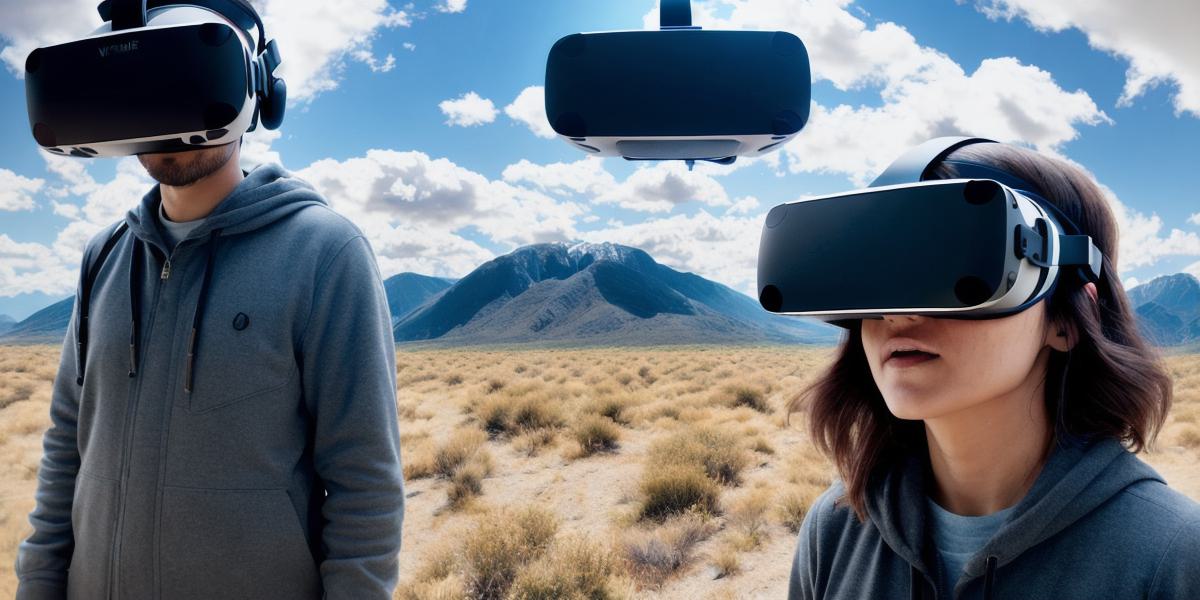Virtual reality (VR) technology has revolutionized the way we interact with digital environments, but it’s not without its challenges. One of the most common issues users report when using VR headsets is a sense of disorientation and nausea. In this article, we will explore why VR can be so disorienting and how developers can mitigate these effects to create more immersive experiences that don’t leave users feeling sick or disoriented.
The Science Behind Disorientation in VR
Disorientation in VR is primarily caused by the mismatch between what our brain expects to see and what it actually experiences. When we wear a VR headset, we are essentially immersed in an artificial environment that our brain has never experienced before. This creates a cognitive dissonance that can lead to feelings of dizziness, nausea, and disorientation.
One way this disorientation occurs is through the phenomenon known as "sickness suppression." When we enter a virtual environment, our brain suppresses the sense of motion sickness that we would normally experience in real life. However, when we remove the VR headset, our brain suddenly experiences the sensation of motion again, which can lead to feelings of disorientation and nausea.
Another factor that contributes to disorientation in VR is the lack of visual cues for depth perception. In real life, our brains use visual cues like shadows, edges, and textures to determine how far objects are from us. However, these cues are often absent in virtual environments, which can lead to a feeling of flatness or disorientation.
Mitigating Disorientation in VR
While disorientation is a common issue with VR, there are several ways developers can mitigate its effects and create more immersive experiences that don’t leave users feeling sick or disoriented. Here are some tips:
- Provide visual cues for depth perception: To help users maintain a sense of depth in virtual environments, developers should incorporate visual cues such as shadows, edges, and textures into their designs. This can be achieved through the use of specialized software that simulates the effects of lighting and shading on virtual objects.
- Use motion sickness suppression techniques: Developers can use motion sickness suppression techniques to help users adjust to the disorientation they may experience when entering a virtual environment. These techniques include gradually increasing the speed of virtual environments, providing visual cues for movement, and using smooth transitions between virtual spaces.
- Test VR experiences with a diverse group of users: To identify potential issues with disorientation and motion sickness in VR experiences, developers should test their designs with a diverse group of users. This can help them identify potential problems before they become widespread and improve the overall user experience.
- Optimize VR environments for comfort and accessibility: To reduce discomfort and increase accessibility, developers should optimize virtual environments for comfort and ease of use. This includes providing comfortable seating options, adjusting lighting and sound levels, and ensuring that virtual objects are easy to interact with.
- Educate users on the potential risks of VR: Finally, developers can educate users on the potential risks of disorientation and motion sickness in VR experiences. By informing users of these risks and providing tips for mitigating them, developers can help create a more positive user experience and reduce the likelihood of negative feedback.
Conclusion
Disorientation is a common issue with virtual reality that can have serious implications for both users and developers. However, by understanding the science behind disorientation in VR and implementing strategies to mitigate its effects, developers can create more immersive experiences that are not only engaging but also comfortable and accessible for all users.
